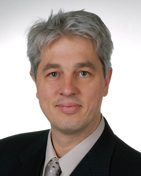
Heiko Jacobs
Nanotechnology group TU Iimenau, Germany
Title: Localized Programmable Gas Phase Electrodeposition; A new Transport Process with Applications Ranging from the Deposition of Functional Nanostructures to the Collection and Identification of Airborne Species for Sensing Applications
Biography
Biography: Heiko Jacobs
Abstract
This talk describes a recently discovered transport approach that enables the localized deposition and collection of microscopic, nanoscopic, and molecular sized particles at high rates and in 3D. The localized gas phase deposition and collection process is based on the interplay of high mobility gas ions and lower mobility nanoparticles and molecules in the presence of a pre-patterned substrate. The first half of the talk will discuss an application where the approach is used to grow functional 3D nanostructures which are composed of metallic and semiconducting particles, including nanostructured electrodes for bulk heterojunction photovoltaics, multifunctional nanomaterial based sensors, plasmonic structures, and nanowire interconnects.[1,2] The second half will discuss an extension to an application in the field of sensing of airborn analytes where the method is applied to locally collect molecules at collection rates that exceed diffusion-only-transport.[3,4,5] Specifically we will demonstrate localized collection of analytes over a wide range of molecular weights ranging from 3×10^17 to 1×10^2 Daltons, including (i) microscopic analyte particles, (ii) inorganic nanoparticles, all the way down to (iii) small organic molecules. Implications: In all cases we find that the collection rate is several orders of magnitudes higher than in the case where our advanced collection schemes is turned off and where collection is driven by diffusion only. The collection scheme is integrated on an existing surface-enhanced Raman spectroscopy based sensor. In terms of response time, the process is able to detect analytes at 9 parts per million within 1 second. As a comparison, 1 hour is required to reach the same signal level when diffusion-only-transport is used.

